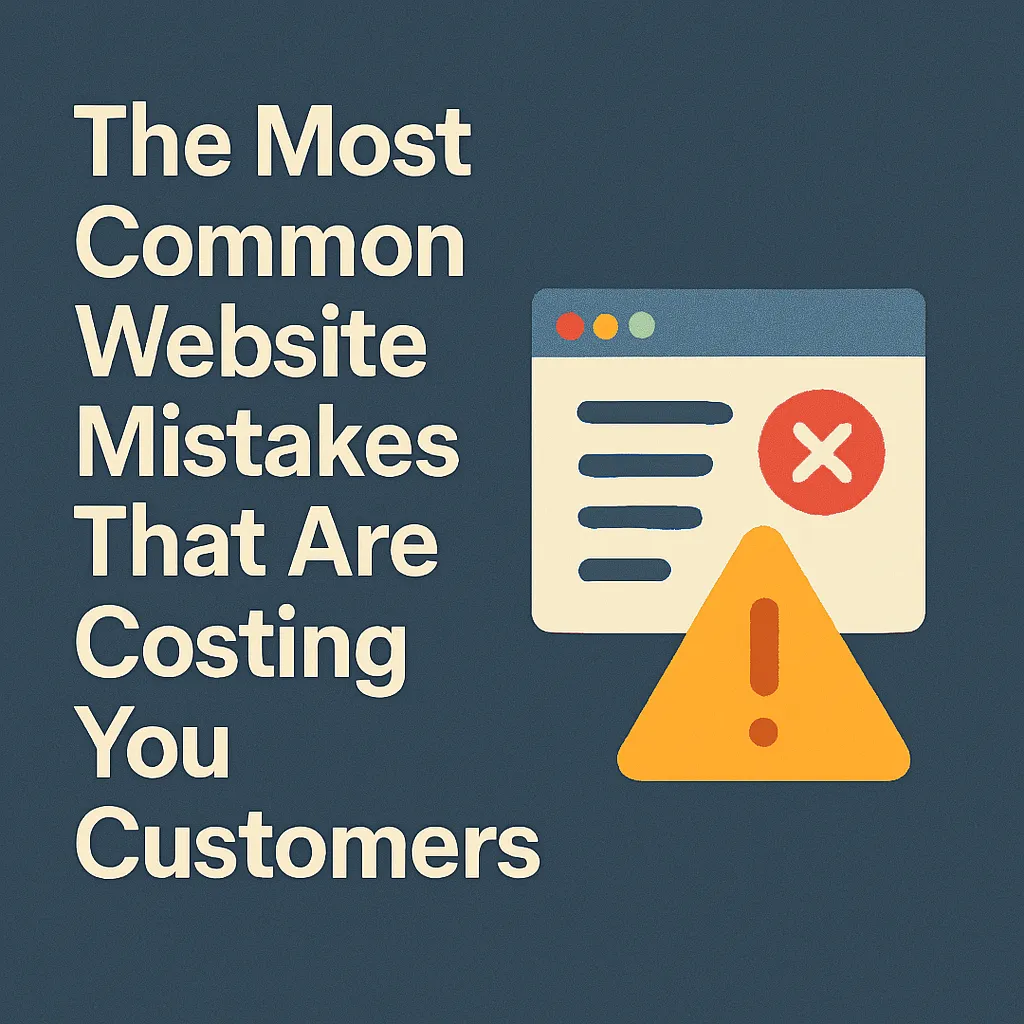
The Most Common Website Mistakes That Are Costing You Customers
The Most Common Website Mistakes That Are Costing You Customers
Introduction to Common Website Mistakes
Your website is one of your most powerful business tools, acting as a 24/7 storefront, lead magnet, and brand ambassador. But are you unknowingly driving potential customers away? In today's digital world, a poorly optimized website can be the difference between gaining or losing a sale.
A bad user experience (UX), slow load times, unresponsive design, and vague calls to action (CTAs) can cost businesses thousands in lost revenue. Studies show that 88% of online consumers say they wouldn’t return to a website after a bad experience. (Source: Sweor)
In this post, we’ll explore the biggest website mistakes that are costing you customers—plus practical tips to fix them. Let’s dive in!
1. Slow Website Loading Times
The Impact of Slow Loading on Bounce Rates
Did you know that 53% of users abandon a website if it takes more than three seconds to load? (Source: Google) Poor website speed leads to:
Higher bounce rates
Lower search rankings (Google prioritizes fast pages)
Reduced conversions and profit loss
Causes of Slow Page Speed
Large images and media files
Too many plugins or scripts
Unoptimized code and too many redirects
Slow hosting provider
How to Fix It
Use tools like Google PageSpeed Insights or GTmetrix to identify issues.
Compress images using tools like TinyPNG or ImageOptim.
Minimize HTTP requests by reducing scripts, CSS, and fonts.
Upgrade to a fast hosting provider (consider a CDN for global speed boosts).
2. Poor Mobile Responsiveness
Why Mobile-Friendly Design Matters
As of 2024, over 55% of website traffic comes from mobile devices (Source: Statista). If your website isn’t mobile-friendly, you’re losing a huge chunk of potential customers.
Impact of a Poor Mobile Experience
Hard-to-read text
Broken layouts and misplaced buttons
Frustrated users leaving immediately
Tips for Mobile Optimization
Use responsive design to adjust content dynamically.
Avoid pop-ups that block important content.
Test your site on Google’s Mobile-Friendly Test tool.
Ensure buttons and links are thumb-friendly for easy navigation.
3. Confusing Navigation and Layout
Simplifying Your Website’s Navigation
Users expect navigation to be intuitive—76% of customers say ease of navigation determines a website’s success. (Source: HubSpot) If your site is too cluttered or complex, visitors won’t stick around to figure it out.
Signs of Poor Navigation
Too many menu options
Unclear or hidden key pages
Unstructured page hierarchy
Ways to Improve Navigation
✔ Keep your main navigation simple (5-7 menu items max).
✔ Use breadcrumbs to help users track their steps.
✔ Improve internal linking between related pages.
✔ Add a search bar for easy access to content.
4. Outdated or Irrelevant Content
Keeping Your Content Fresh and Relevant
If your website content hasn’t been updated in years, customers may think your business is inactive or outdated. Regularly refreshed content helps with SEO, credibility, and engagement.
The Dangers of Outdated Content
Misinformation leads to brand distrust.
Search engines lower your ranking due to stale content.
Visitors leave if they can’t find up-to-date answers.
Content Refresh Strategies
✅ Update blog articles with new statistics and insights.
✅ Improve service pages with current industry trends.
✅ Remove or edit outdated promotions and old event pages.
✅ Use Google Search Console to find underperforming pages and refresh them.
5. Lack of Clear Calls-to-Action (CTAs)
The Role of CTAs in Conversions
Visitors need a clear next step—whether it’s buying a product, booking an appointment, or signing up for a newsletter. Websites without strong CTAs miss out on high-converting traffic.
Signs of Weak CTAs
🚫 Generic phrases like “Learn More” instead of action-driven ones (“Get Your Free Quote”)
🚫 CTAs placed too far down the page
🚫 No urgency (“Limited Offer - Sign Up Today”)
Tips for Crafting Effective CTAs
🔹 Use strong action words like "Download," "Get Started," "Claim Your Offer".
🔹 Make CTAs large, visible, and placed above the fold.
🔹 Add urgency with time-limited offers.
🔹 A/B test CTA designs to optimize conversions.
Conclusion: Transforming Your Website for Customer Retention
A well-optimized website is key to attracting and retaining customers. By fixing common website mistakes, you’ll:
✔ Reduce bounce rates and improve user experience
✔ Enhance SEO rankings for better visibility
✔ Improve customer trust and conversion rates
Don’t let these mistakes cost you sales. Take action today to optimize your site and keep customers engaged!
Need expert website optimization help? Contact us for a free audit! 🚀
